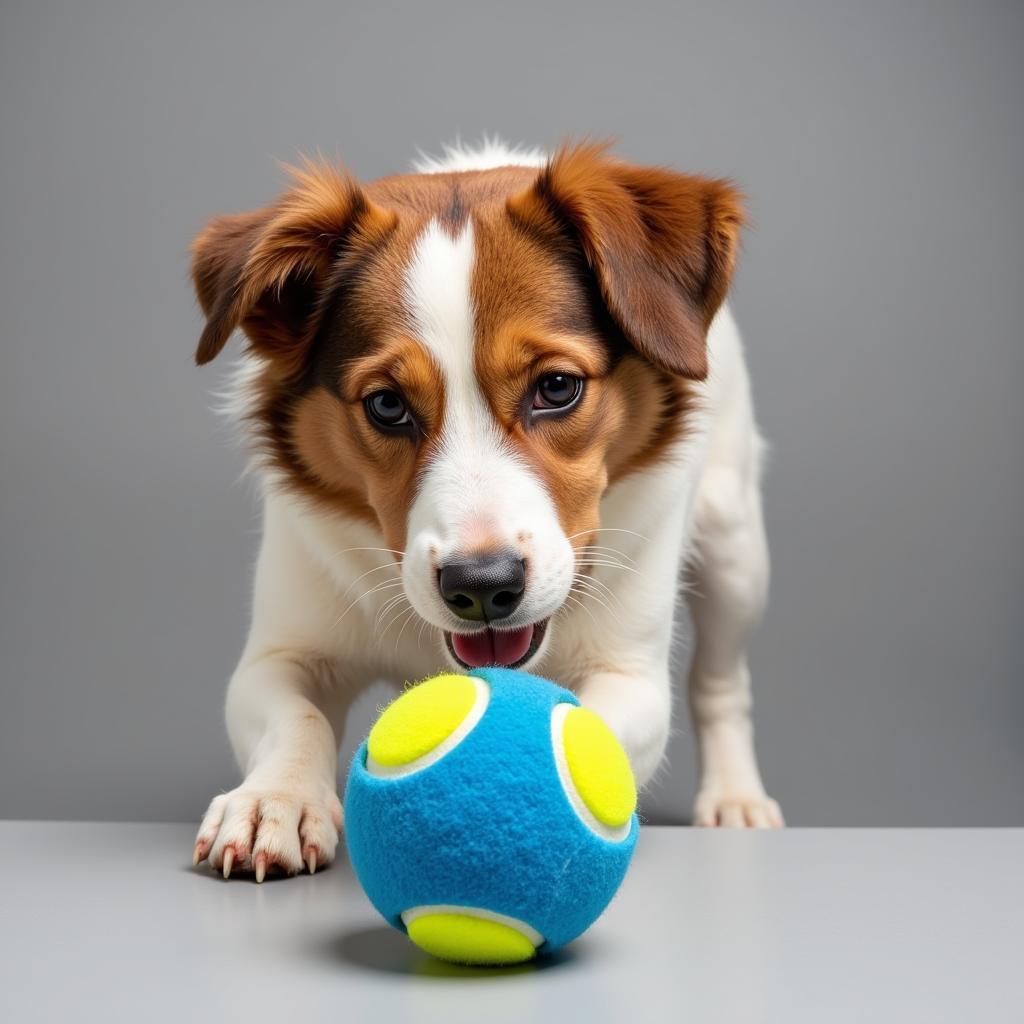Ever wondered what colors our canine companions prefer? It’s a common question among dog owners. While dogs don’t see the world exactly as we do, they can certainly perceive color, and understanding their color preferences can enhance their training, toys, and overall environment.
Decoding Canine Color Vision
Unlike humans who have trichromatic vision (seeing red, green, and blue), dogs have dichromatic vision, similar to humans with red-green color blindness. They essentially see the world in shades of blue, yellow, and gray. This means they can’t distinguish between red and green, perceiving both as brownish-gray.
So, What’s the Most Appealing Hue for a Dog?
Based on studies and observations, blue and yellow stand out as the most vibrant and easily discernible colors for dogs. This explains why many dog toys are designed in these colors. While a bright red ball might seem appealing to us, it appears dull and less stimulating to a dog. Opting for blue or yellow toys can make playtime more engaging for your furry friend.
 Dog seeing blue and yellow toys clearly
Dog seeing blue and yellow toys clearly
Choosing the Right Colors for Your Dog’s World
Knowing a dog’s color preferences can influence choices beyond just toys. Consider using blue or yellow for training tools like leashes and agility equipment. These colors will be more visible and thus more effective in training. Even bedding and bowls can benefit from incorporating these colors.
Beyond Blue and Yellow: Other Considerations
While blue and yellow are generally preferred, individual dogs might show preferences for specific shades or combinations. Observe your dog’s reactions to different colors and tailor their environment accordingly.
 Dog playing with a blue frisbee in the park
Dog playing with a blue frisbee in the park
Do Colors Affect a Dog’s Mood?
While there’s no definitive scientific evidence that colors directly influence a dog’s mood in the same way they might affect humans, anecdotal evidence suggests that some dogs might react differently to certain colors. A calm dog might find a brightly colored room overstimulating, while an energetic dog might be more engaged in a colorful environment.
What About Other Animals?
Different animal species have varying color perception capabilities. Cats, for instance, also have dichromatic vision but can see some shades of green. Birds, on the other hand, often have tetrachromatic vision, enabling them to see a much broader spectrum of colors than humans or dogs.
Expert Insights
Dr. Emily Carter, a veterinary ophthalmologist, explains, “Dogs rely more on brightness and contrast than color differentiation. Choosing high-contrast colors can make their environment easier to navigate.”
Dr. David Miller, a canine behaviorist, adds, “Using preferred colors for training tools can enhance a dog’s focus and improve the learning process.”
Conclusion
Understanding what a dog’s favorite color is allows us to create a more enriching and stimulating environment for our furry companions. By focusing on blues and yellows, we can make toys, training tools, and even everyday objects more appealing and engaging for our dogs. Remember that each dog is unique, so observe your dog’s preferences and adjust accordingly. By considering their visual world, we can further strengthen the bond with our beloved pets.
FAQ
- Can dogs see black and white? Yes, dogs can see shades of gray, which includes black and white.
- Are all dogs colorblind? Dogs have dichromatic vision, which is a form of color blindness.
- What color is calming for dogs? While more research is needed, anecdotal evidence suggests some dogs find blue and purple calming.
- Do dogs prefer bright or dull colors? Dogs generally prefer brighter, more vibrant colors like blue and yellow.
- Can color affect a dog’s behavior? While not definitively proven, some believe color can influence a dog’s mood and energy levels.
- How can I test my dog’s color preference? Observe your dog’s reactions to different colored toys and objects.
- Why are most dog toys blue or yellow? These colors are easily discernible for dogs and thus more appealing.
Need Help with Your Canine Companion?
Contact us for expert advice and support: Phone: 0373298888, Email: [email protected] or visit our office at 86 Cau Giay, Hanoi. We have a 24/7 customer service team.

